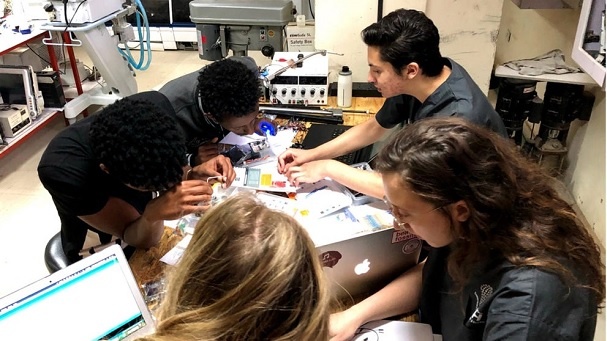
A team from Innovators for Global Health (Northeastern University) surveyed doctors, nurses, and technicians at SPHMMC in Ethiopia, and found they were in need of surgical lamps.
By Irvin Zhang (Northeastern University)
Surrounded by the hustle and bustle of the Merkato, the largest market in sub-Saharan Africa, Joe Iskander was searching for a few specific screws. He was essentially looking for a needle in a giant haystack.
The Merkato spans several square miles across the heart of Ethiopia’s capital, Addis Ababa. Iskander says the vendors at the Merkato sell “anything and everything you could think of.” It was the best bet for his mechanical needs.
Iskander, a bioengineering student at Northeastern University (Northeastern), wandered the market for more than an hour. Iskander needed these screws to finish installing a surgical lamp at St. Paul’s Hospital and Millennium Medical College (SPHMMC), the second largest hospital in the country. It was part of a spring break sojourn with four other students in Addis Ababa as members for Innovators for Global Health, a student organization that equips hospitals with low-cost medical devices created with locally sourced parts.
This was the organization’s second time in Addis Ababa. Ethiopia lacks access to many necessary medical devices, Iskander says. A 2011 study that examined more than 100,000 pieces of medical equipment in “developing countries” found that 80 percent of the equipment was donated. But, the overwhelming majority of the donated items were unusable after five years. And in Ethiopia, these devices often can’t be repaired because the parts are hard to find.
“They need devices that are designed for them that they can build on their own,” Iskander says. “Repairing equipment for someone fixes an immediate problem but it also causes problems later on. But, if you give someone the tools and instructions on how to build and repair it themselves, it prevents problems down the road, like if something breaks, they can fix it on their own because they put it together.”
During their first trip to Ethiopia in 2018, Iskander and his team surveyed doctors, nurses, and technicians at the hospital, and found they were in need of surgical lamps.
“The surgical lamps they had ran off the hospital’s power and the hospital lost electricity pretty frequently, so surgeons would be in the middle of surgery, the power would go out and they would essentially be operating blind,” Iskander says.
With that in mind, the team returned to Boston, and started designing and purchasing materials to build a new surgical lamp with the goal of bringing it back in 2020, and showing the technicians in Addis Ababa how to build their prototype.
Continue reading this story at News @ Northeastern
